
It's Culver City Historic Site No. 4—the former home of Citizen Publishing and Printing Company. The company was founded in 1923 by Eugene Donovan, who commissioned the now nationally-landmarked building to be designed by architect Orville E. Clark—based on a design concept developed by Eugene's wife, Catherine Donovan.
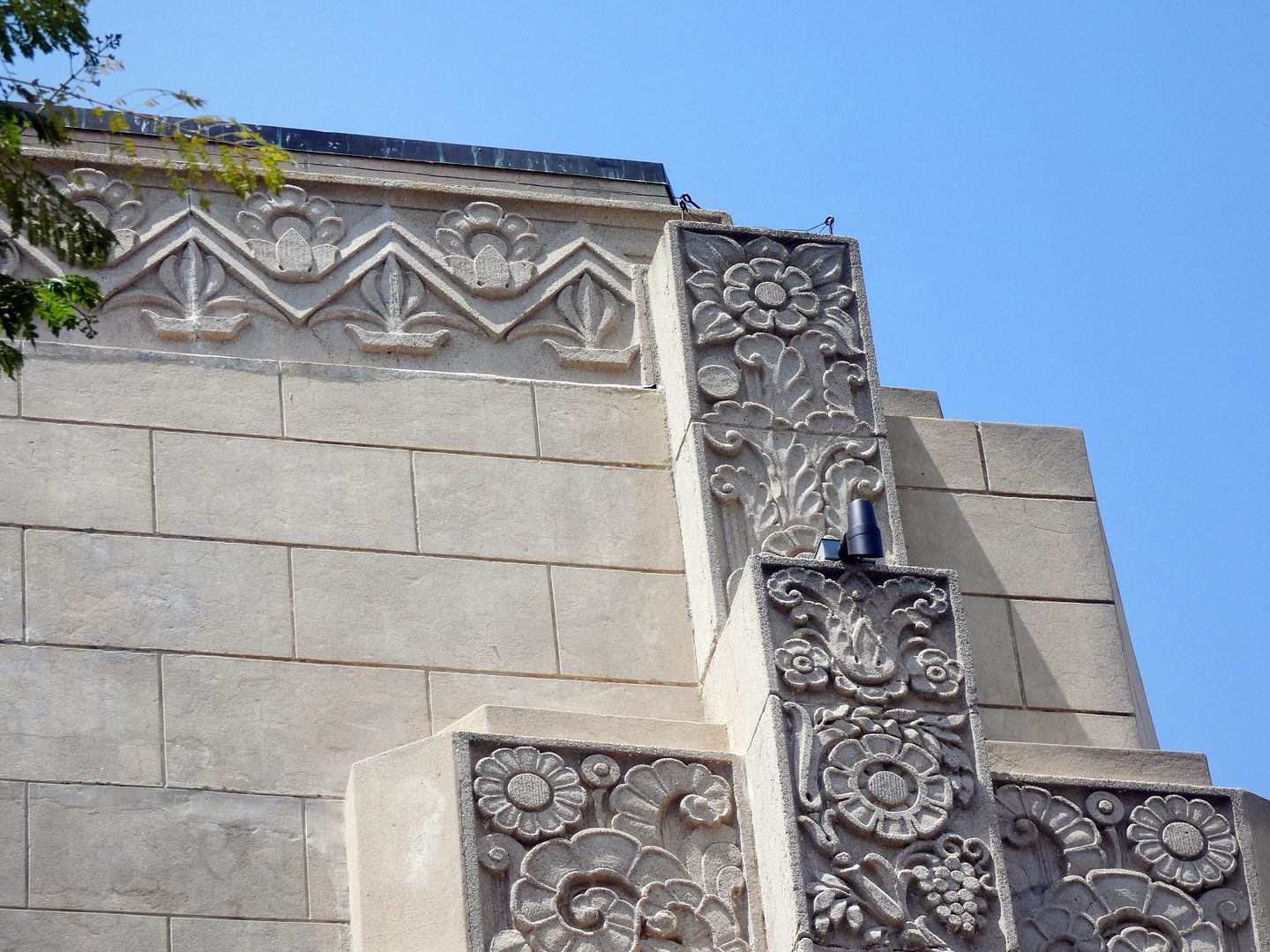
The Donovans had moved to the LA area after surviving the 1906 San Francisco earthquake and fires—and stipulated that the Beaux Arts and Art Deco structure conform to the Bay Area's newly instituted building regulations. Eugene also insisted that the builders source all materials, supplies, and labor from local Culver City vendors and manufacturers.
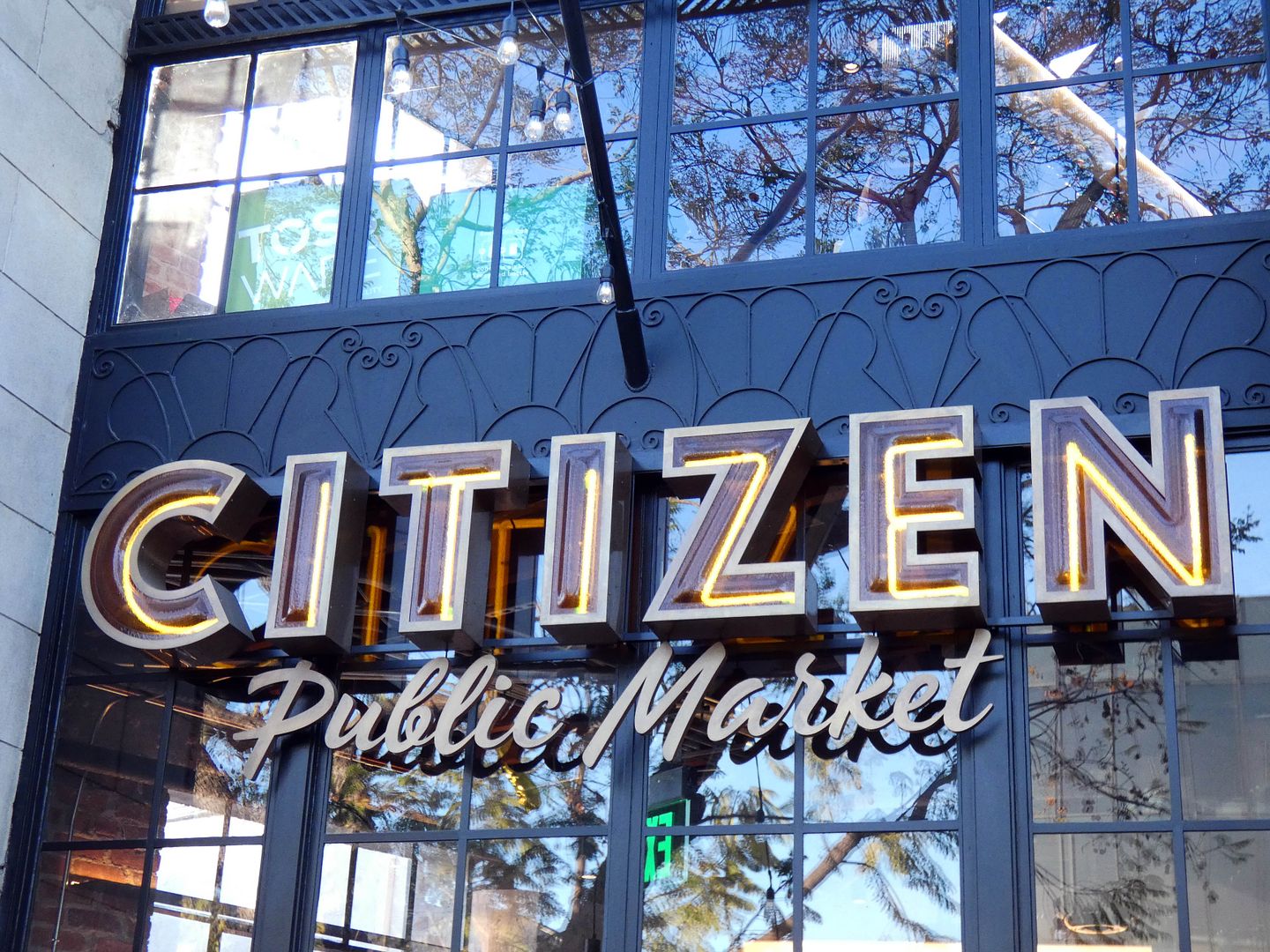
Past the cast concrete flowers and fruit-and-vine design motif of the façade was a relatively utilitarian, 6,600-square foot building that was once home to The Citizen, a weekly community newspaper that was Culver City's largest and most influential until the 1950s. Eugene Donovan served as its publisher.
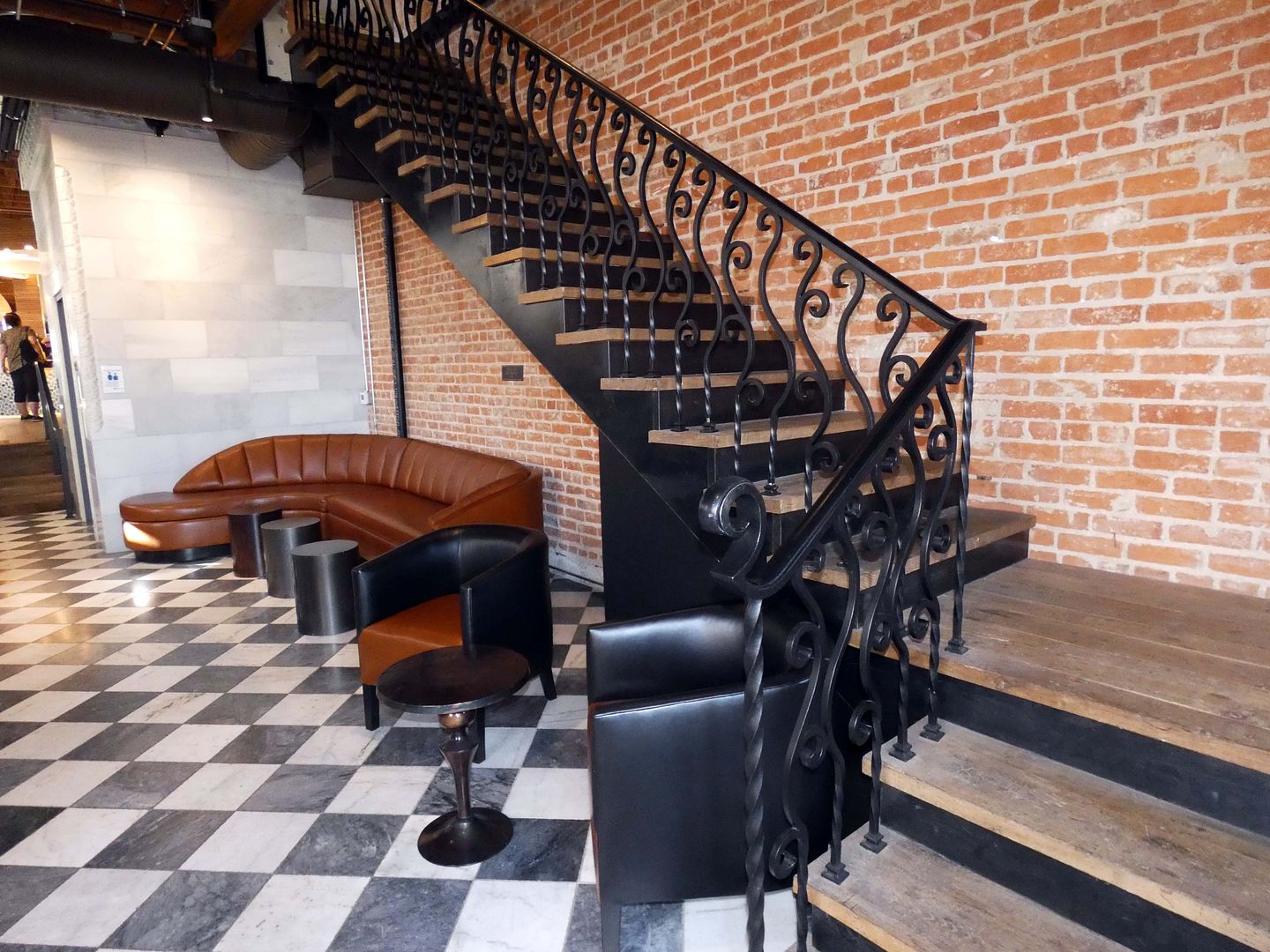
Upon entering the two-story, arched entrance vestibule, you'd wind up in a ground-floor reception area—which looked remarkably the same as it does today.
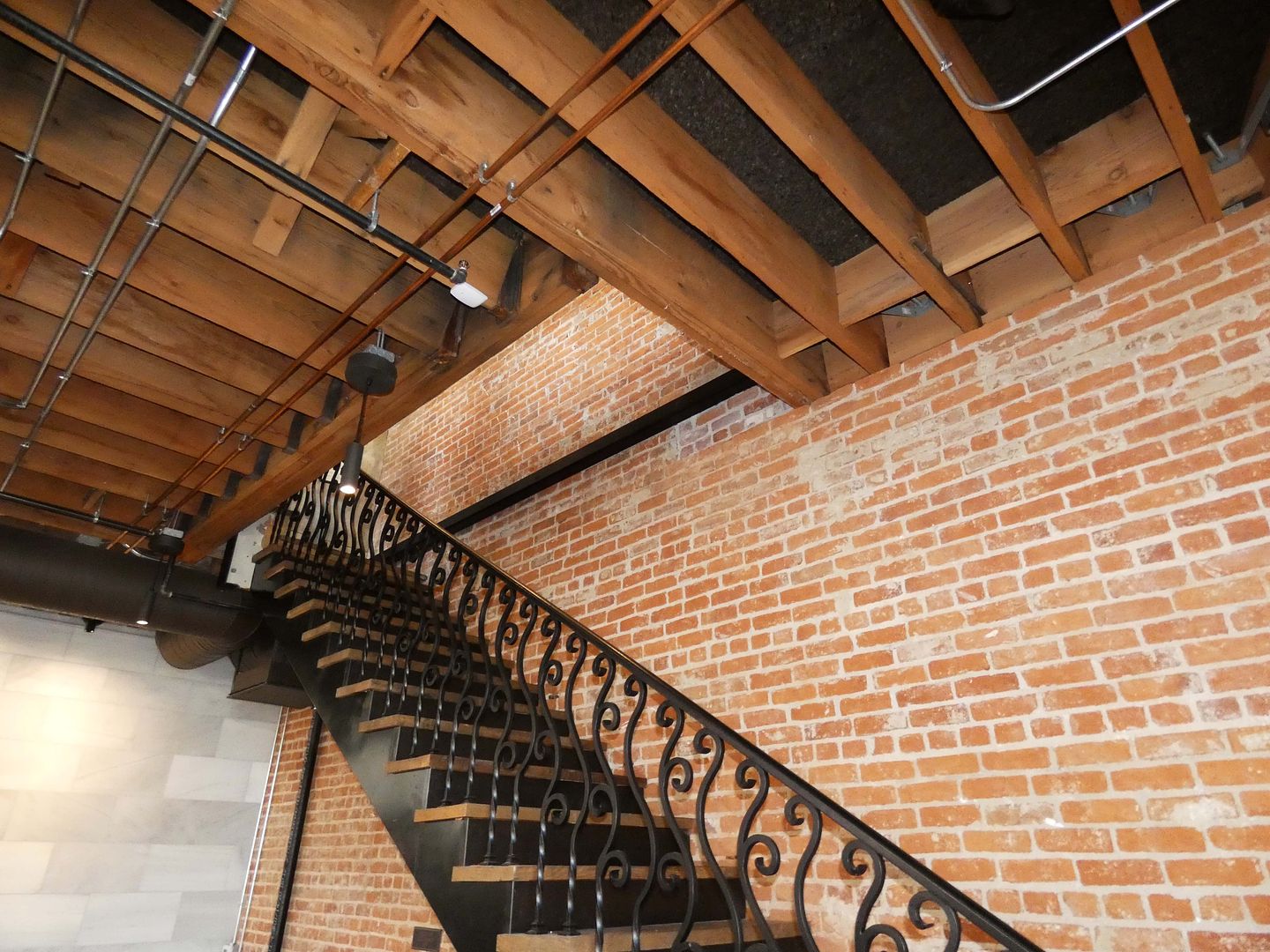
To get to Eugene's publishing offices, you'd climb a staircase with a decorative wrought iron railing...
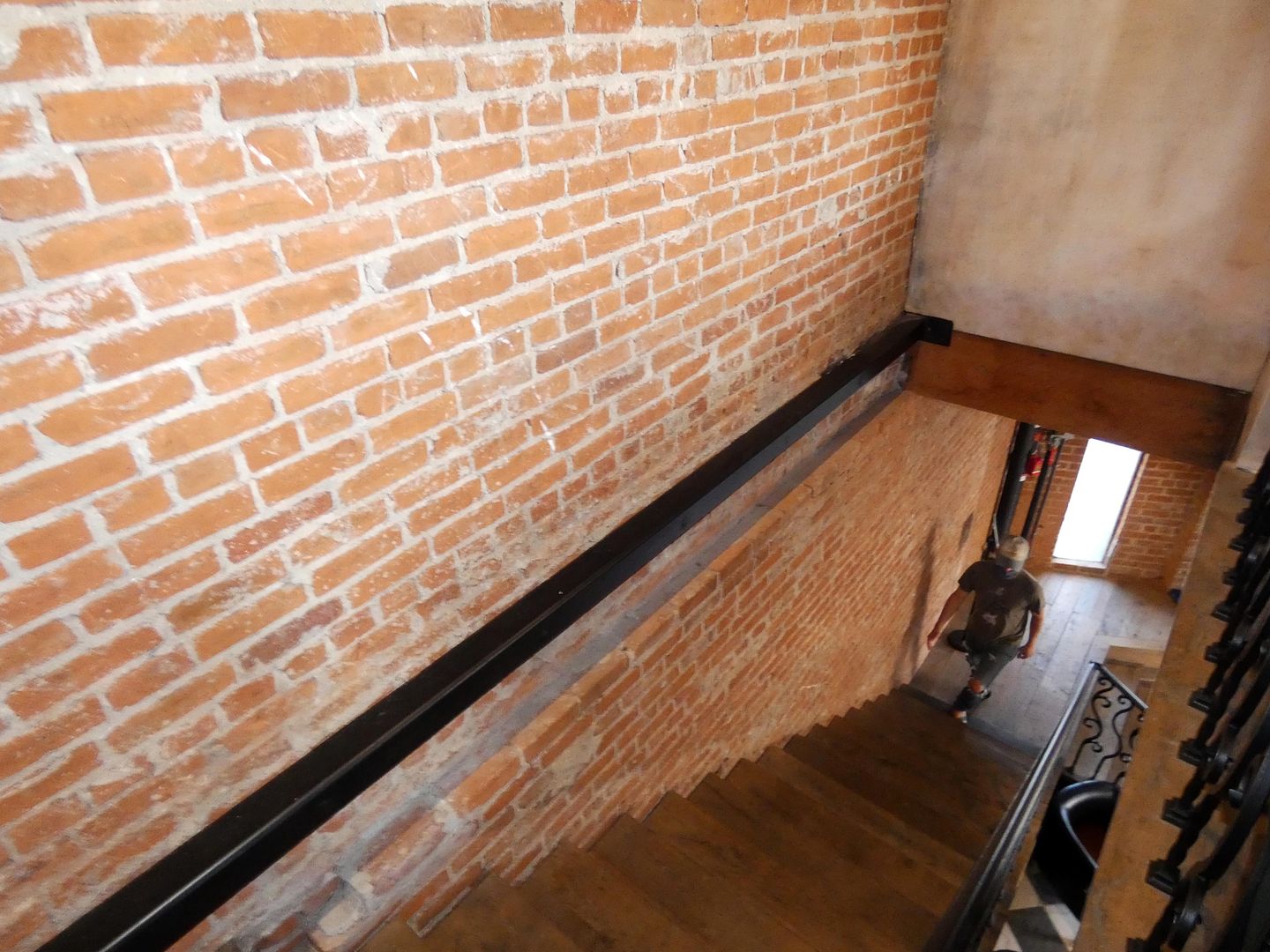
...the same staircase and railing you'd use today to get to the upstairs bar and outdoor patio.
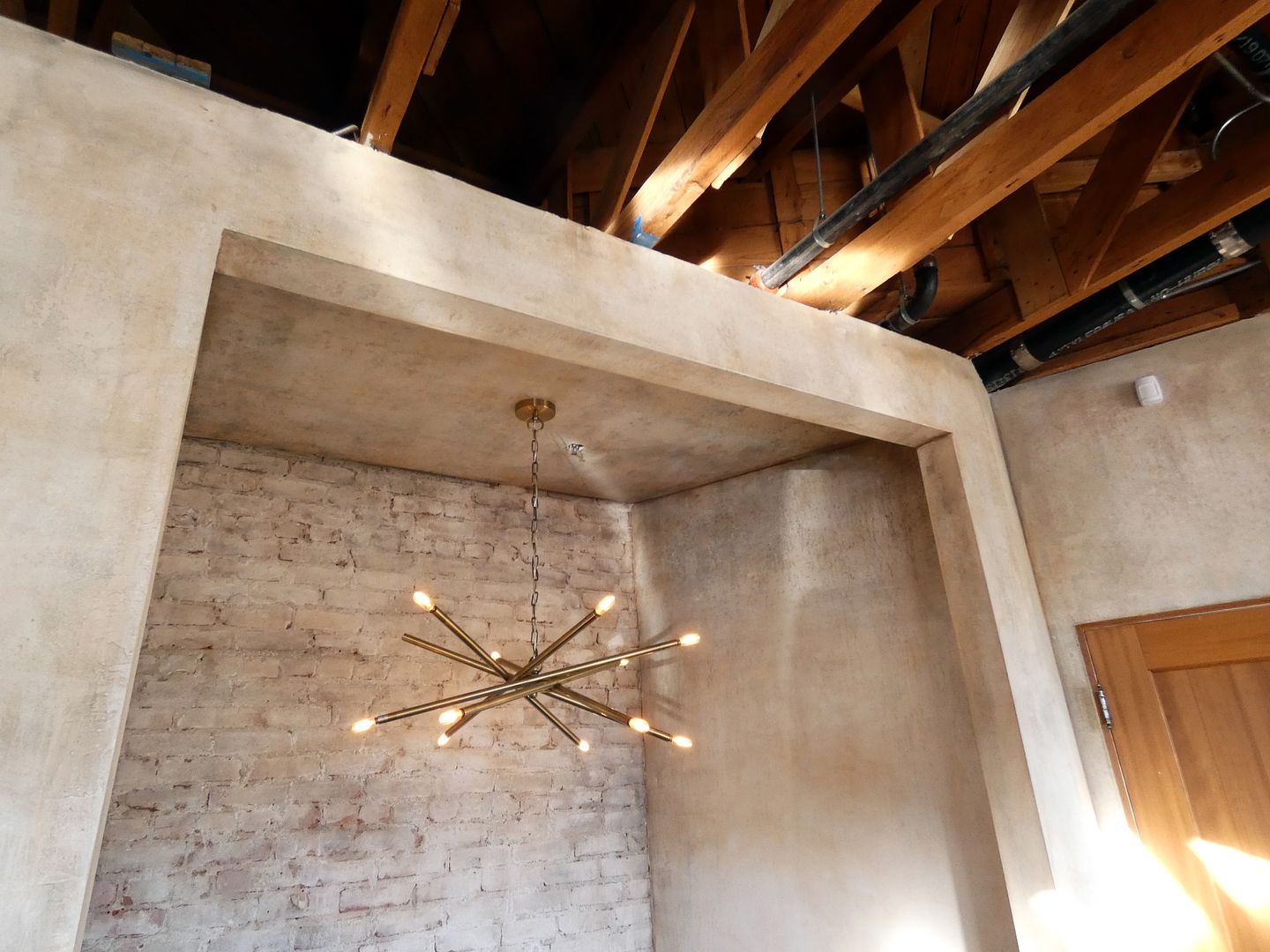
The entire space has been converted into the Citizen Public Market...
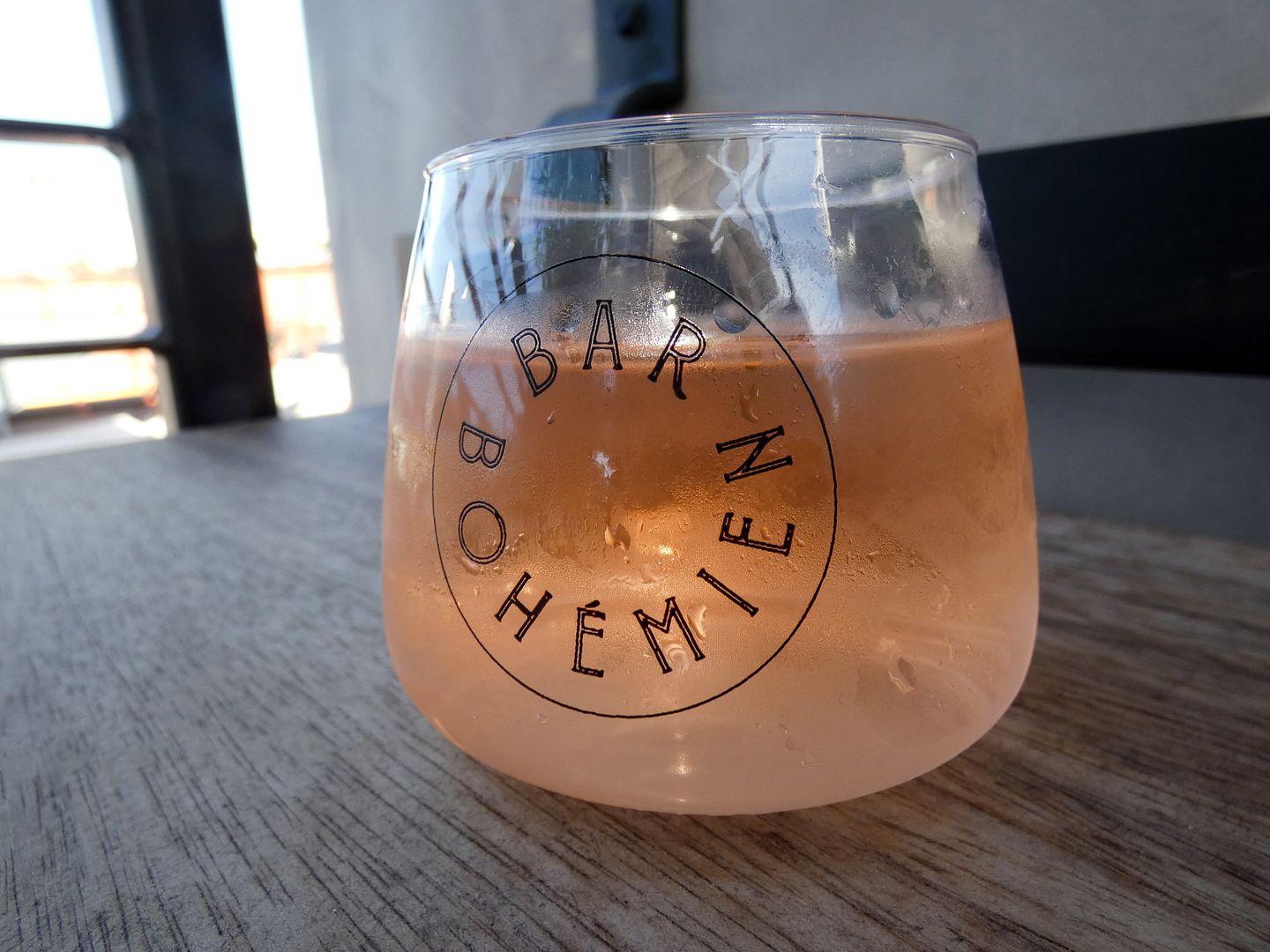
...and the current rooftop tenant is Bar Bohemien.
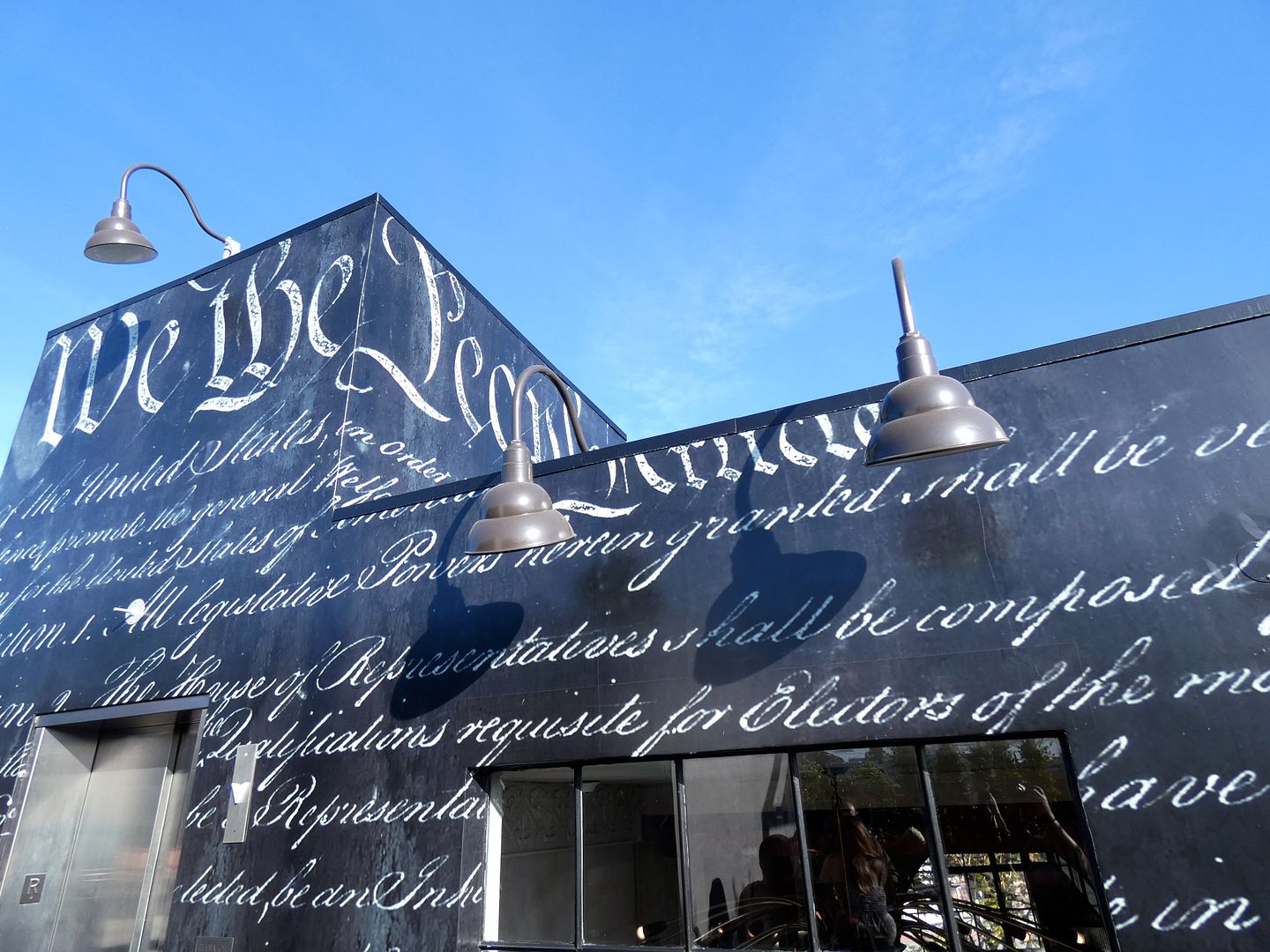
But no matter where you're eating or drinking—whether on the rooftop garden or downstairs—you can't forget the type of business this historic building once housed.
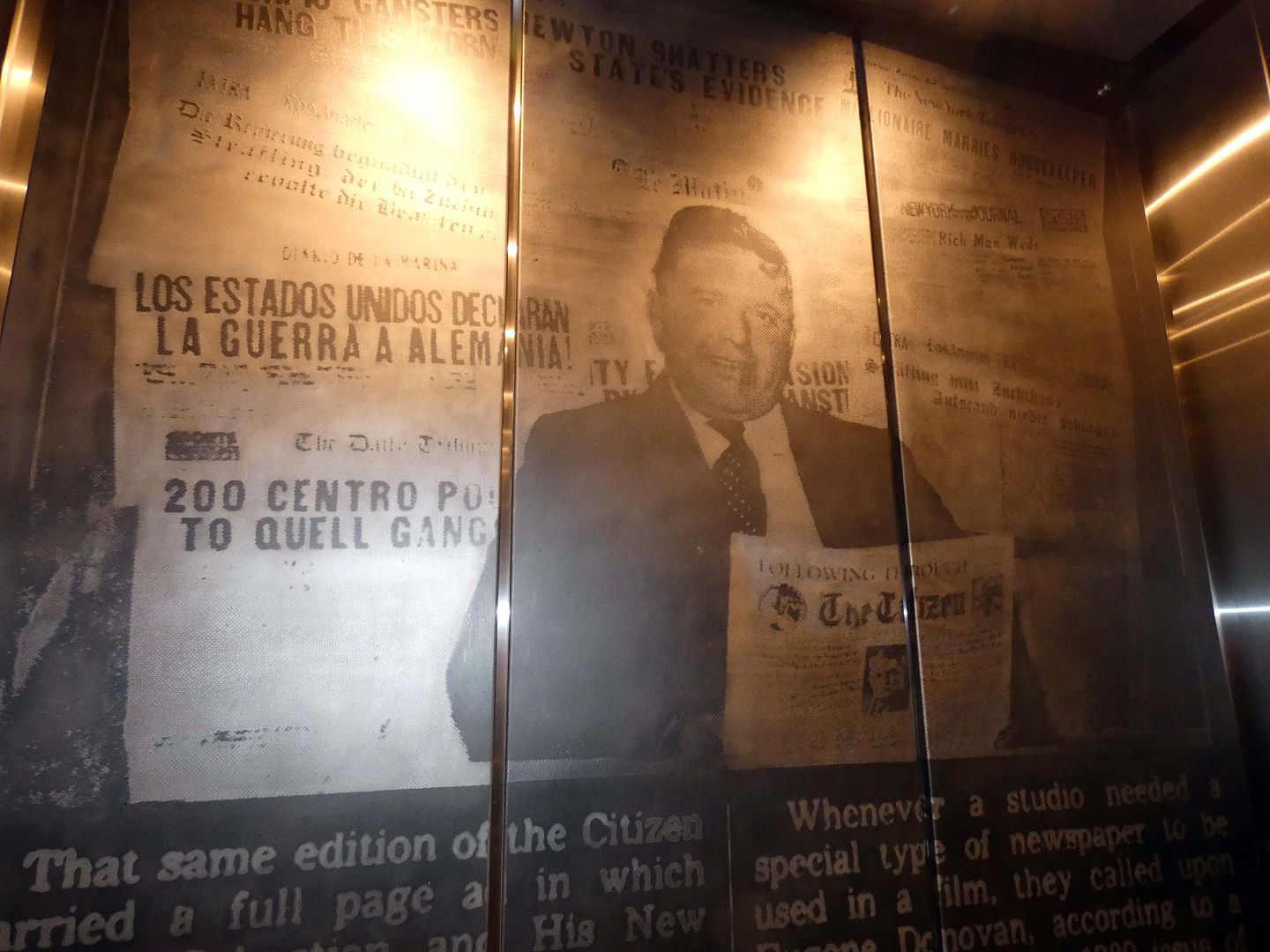
That's especially true when you take the elevator...
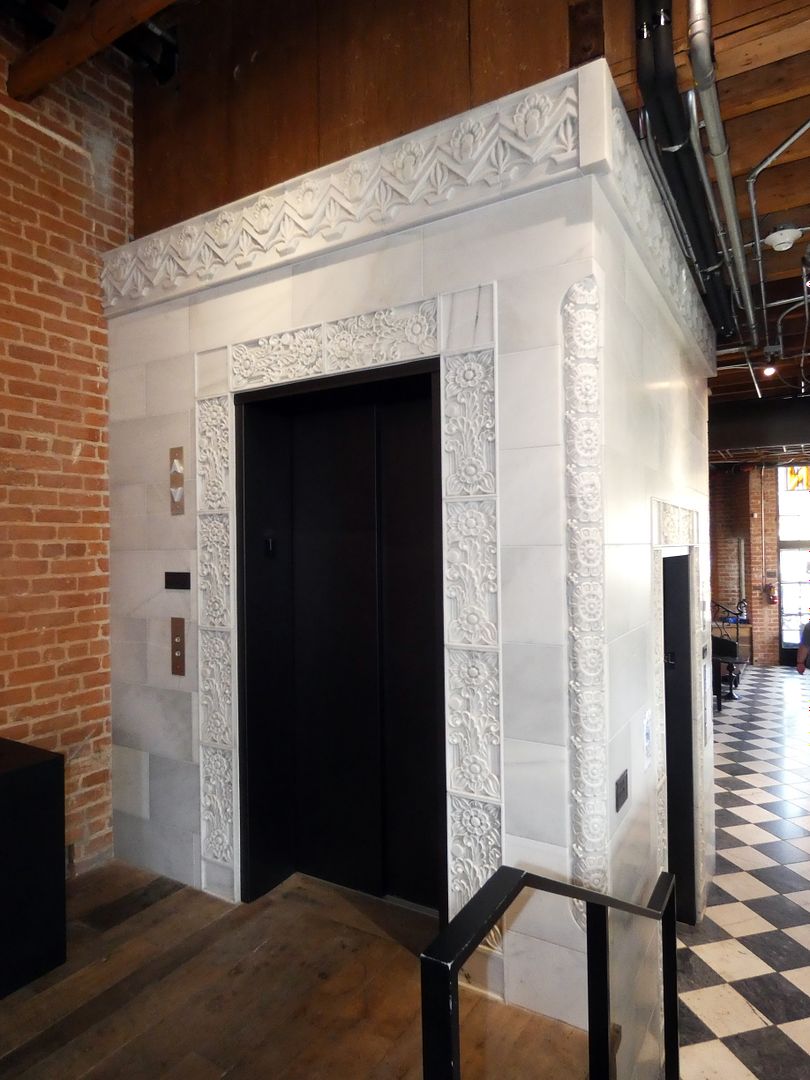
...whose marble motif matches the concrete one on the front exterior of the building.

It's worth pausing there to admire the original checkerboard flooring, which has been preserved.

The elevator marks the border between the original front building on Culver Boulevard...

...and its single-story annex in the back, which now houses The Jolly Oyster...
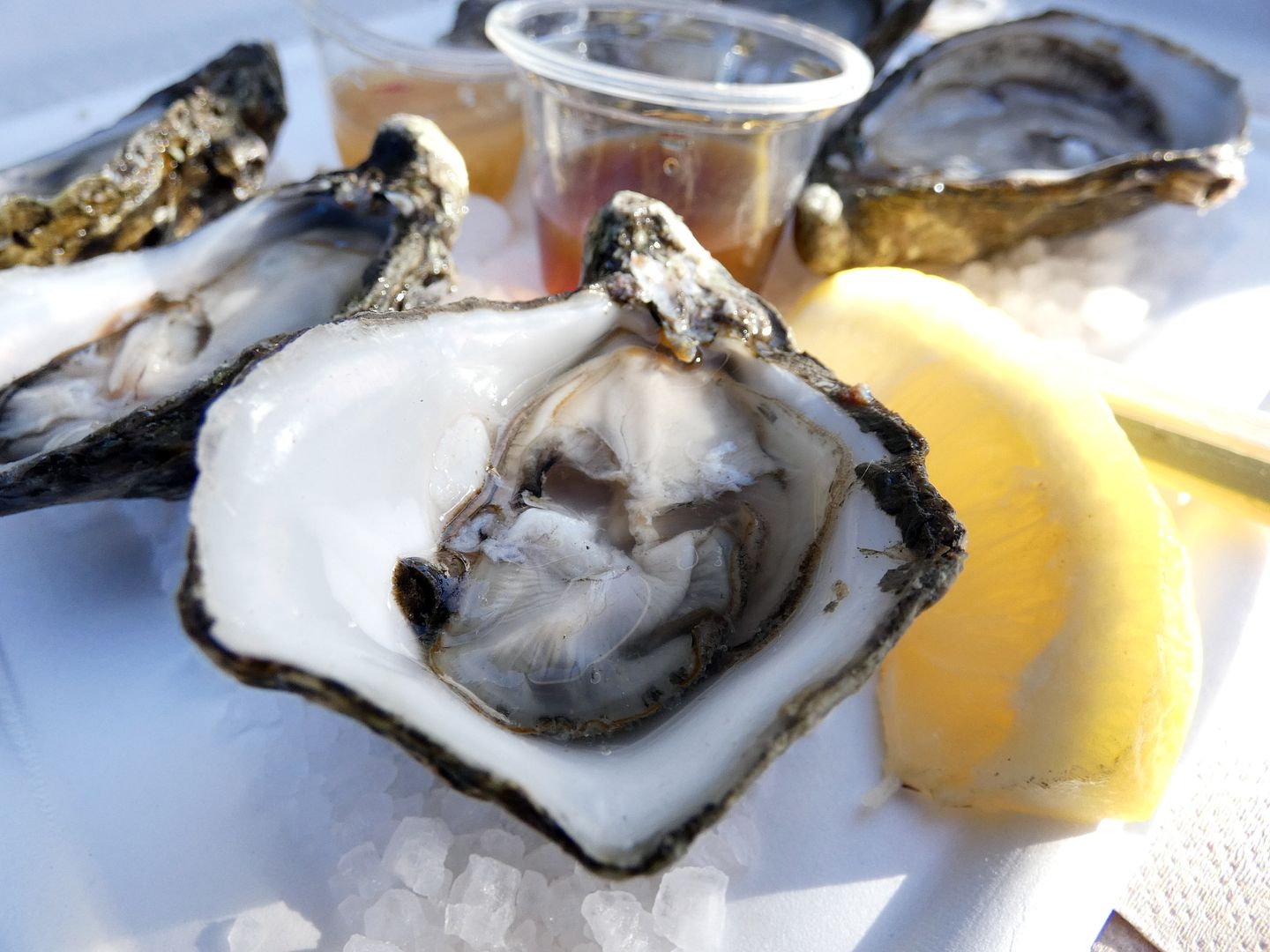
...a Ventura-based seafood operation that provides bivalves from Baja California, Mexico.
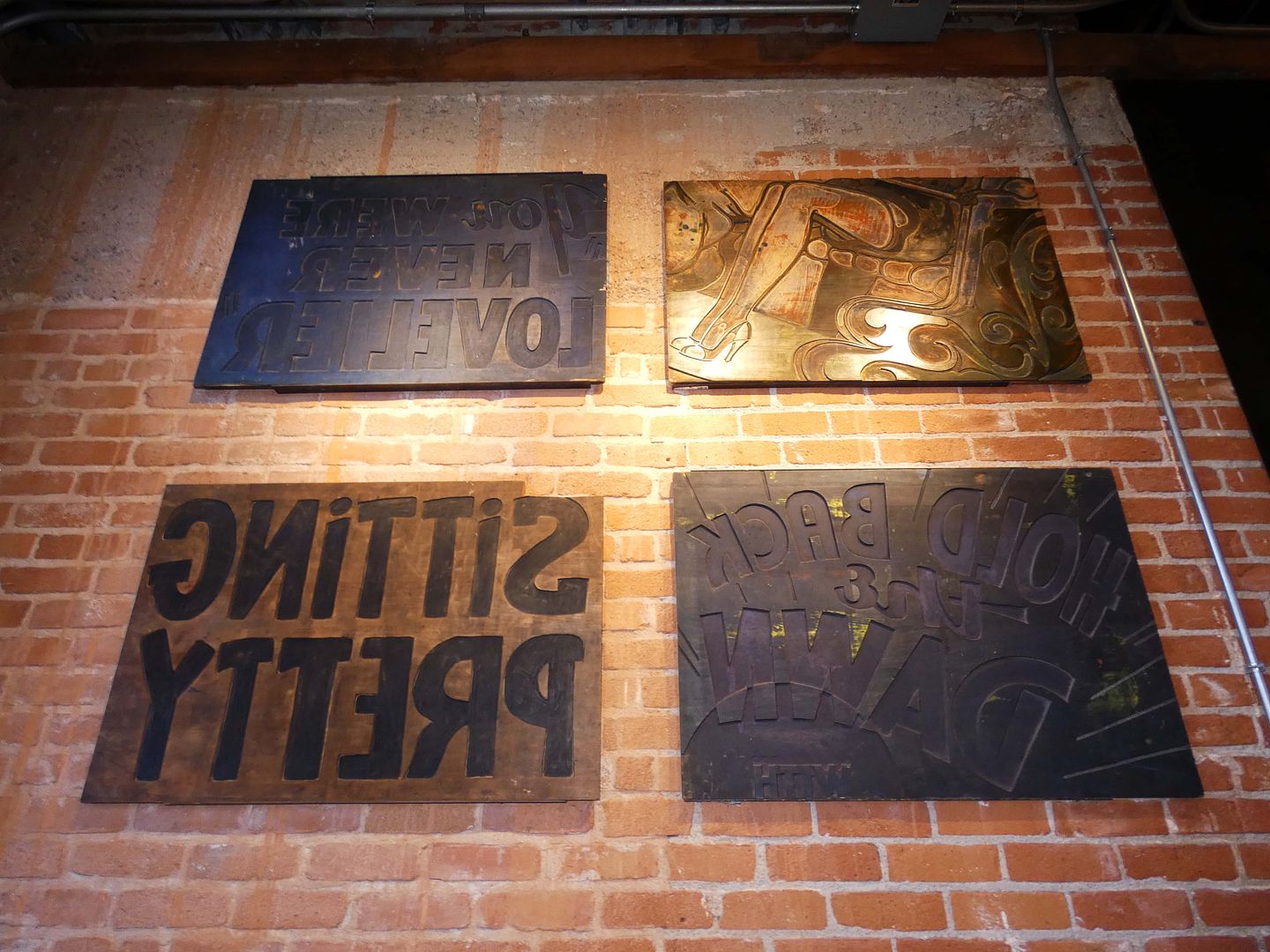
In the back is where the pressroom and bindery was once located...
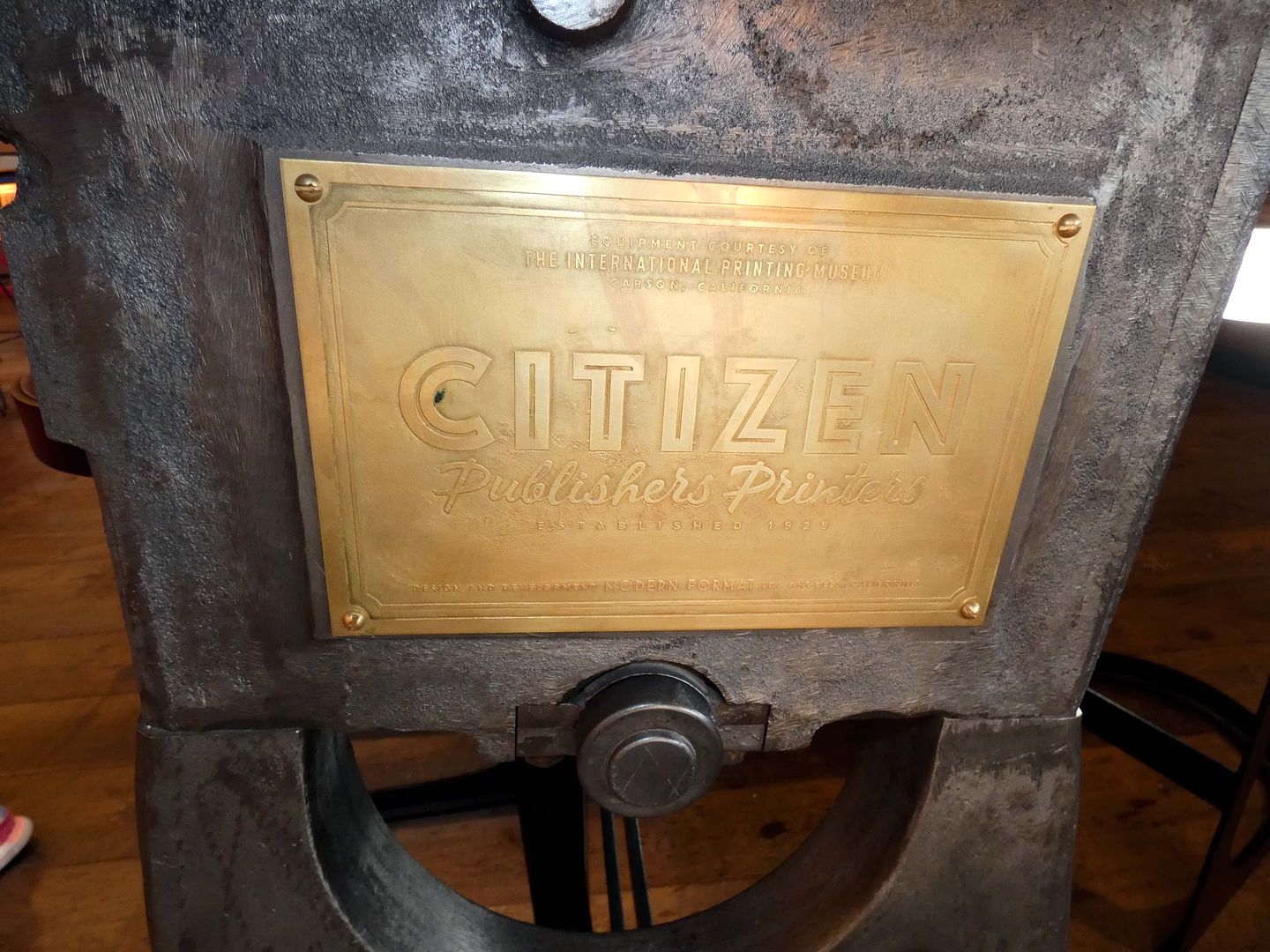
...where printers worked not only on The Citizen but also on fake or "dummy" newspapers that Hollywood studios (particularly nearby MGM) used as props in their movies.
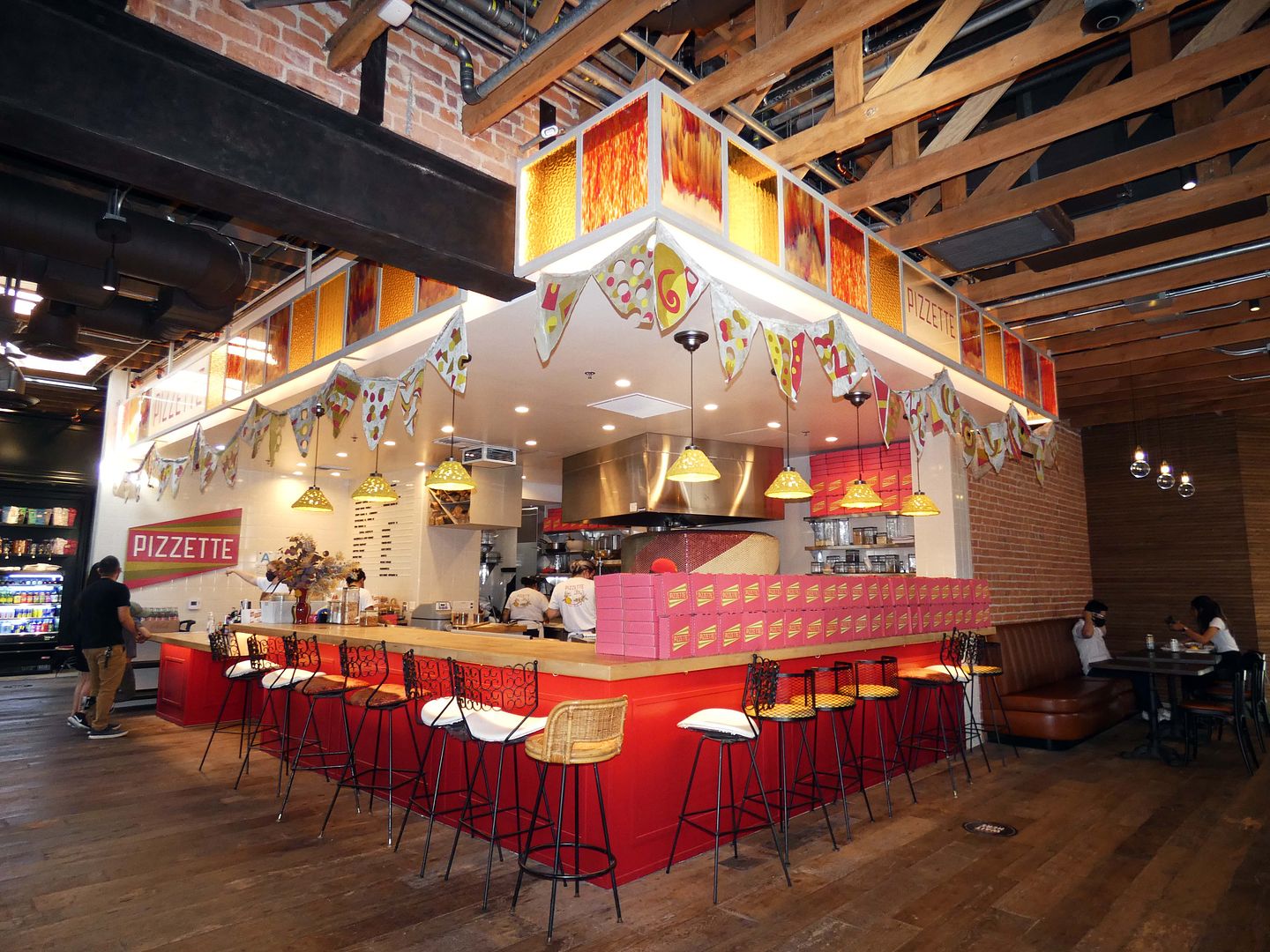
Today, it's the location restauranteur Nancy Silverton chose to debut her new culinary concept, Pizzette...
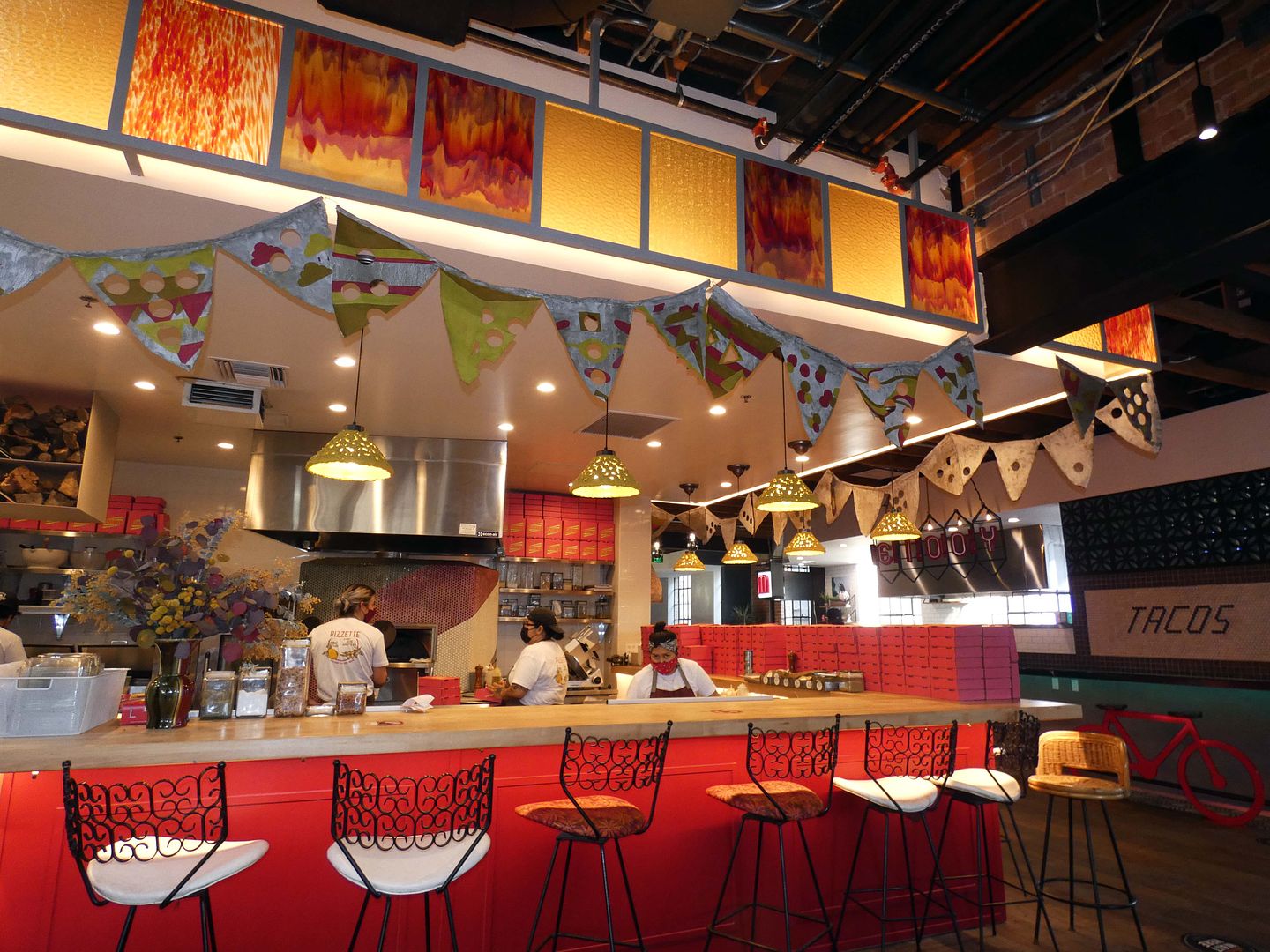
...which serves salads, stuffed pizzas...
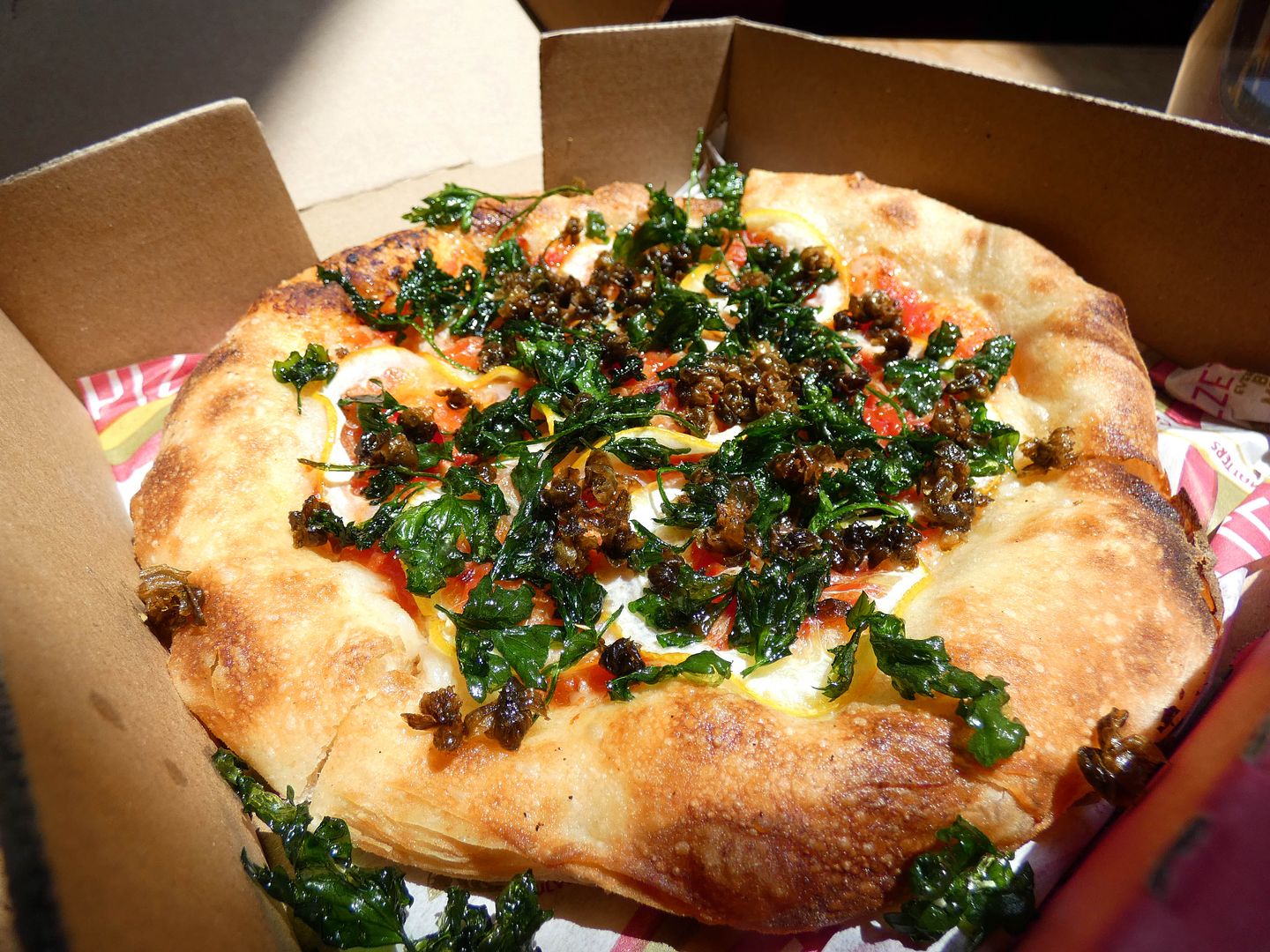
Meyer lemon pizzette
...and personal-sized pizzas similar to what she's got on the menu at Mozza in Hollywood.
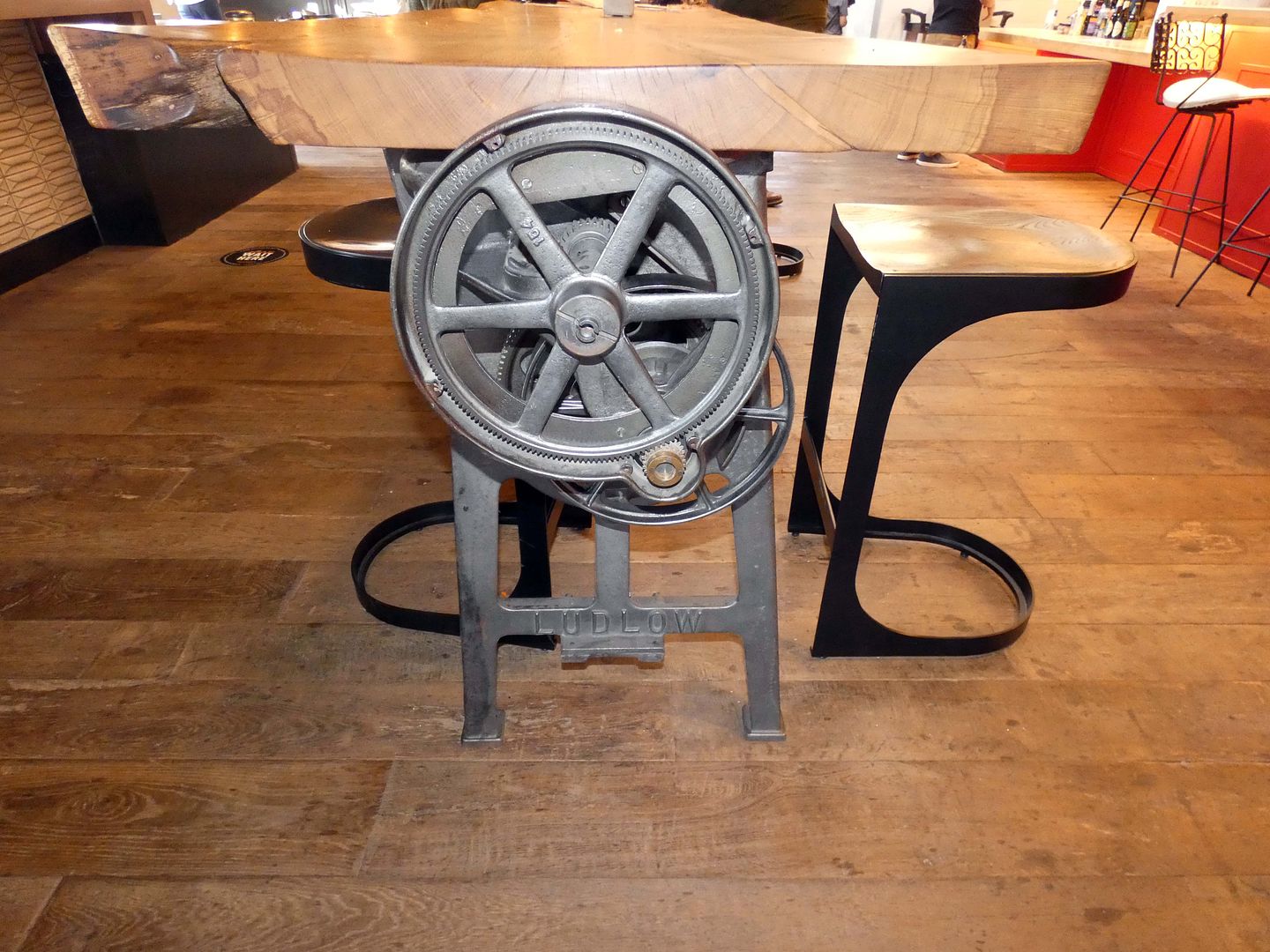
While there's plenty of patio seating in the back and upstairs, it's really cool to sidle up to old printing equipment (from the International Printing Museum) that's been turned into communal dining furniture...
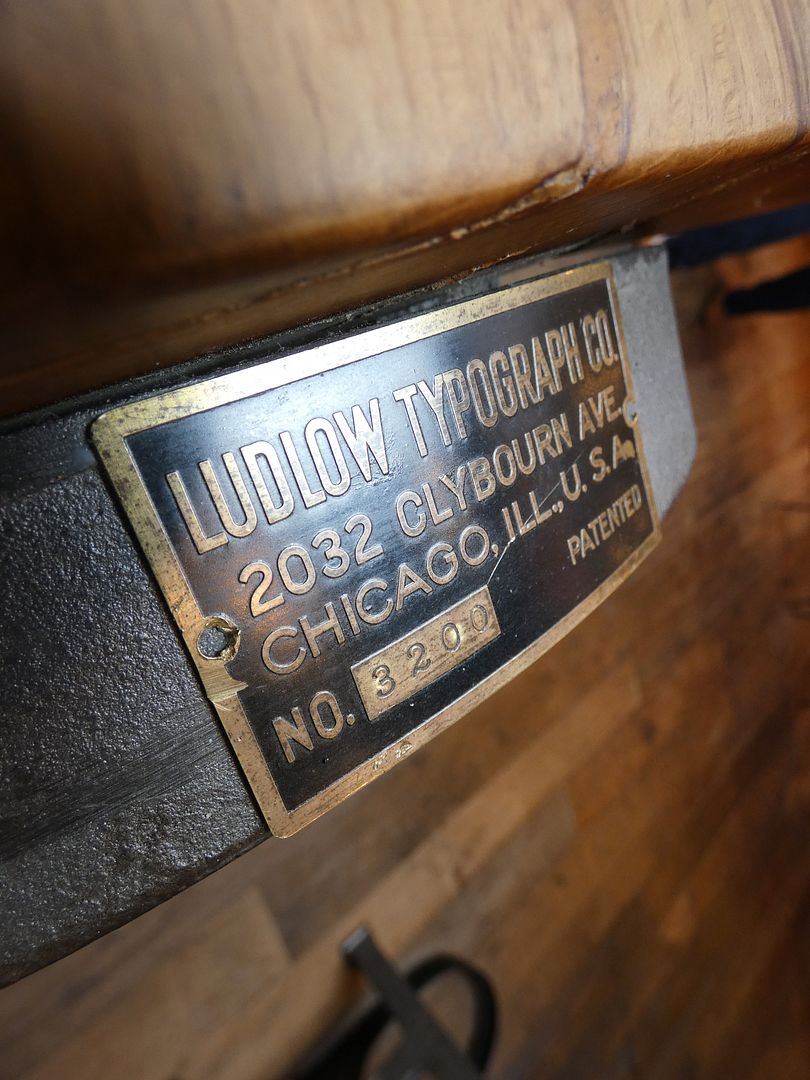
...like the letterpress linecasting machine manufactured by Ludlow Typograph Co. of Chicago., perhaps used to set newspaper headlines.
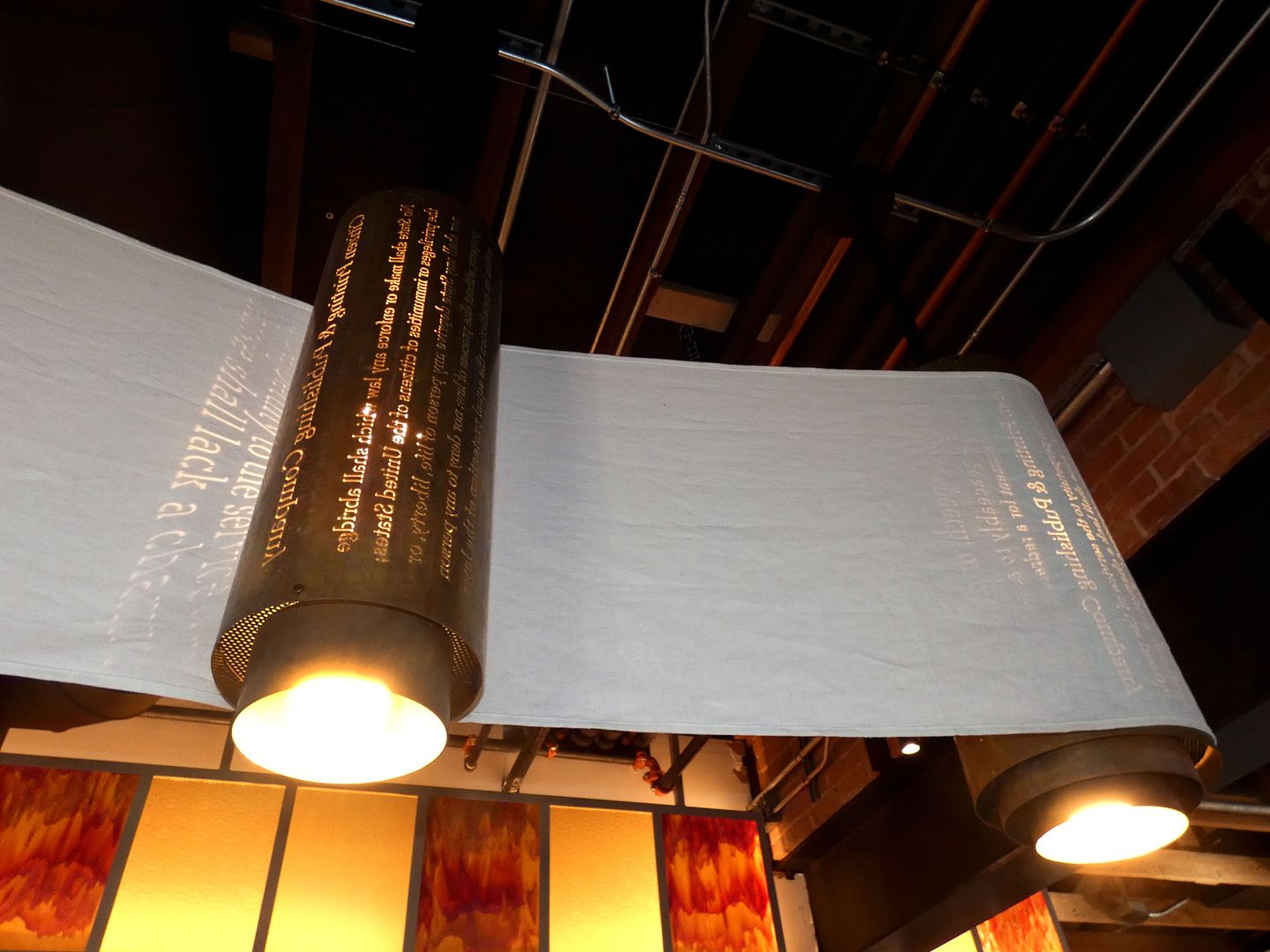
The Citizen wasn't the only community-focused newspaper being printed in the LA area at the time. Its contemporaries included the Beverly Hills Citizen and Hollywood Citizen (later the Hollywood Citizen-News).
But it may be distinctly remembered for its editorial purpose, which was stated as:
"Dedicated in perpetuity to the service of the peoplethat no good cause shall lack a championand that evil shall not thrive unopposed."
For a lasting legacy, those words are projected on scrolls that wrap around customized lighting fixtures in the former printing area in the back.
Related Posts:

No comments:
Post a Comment